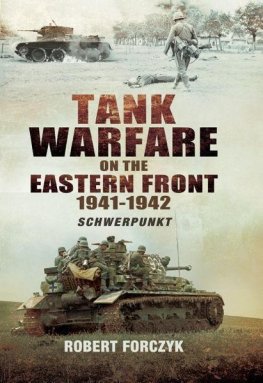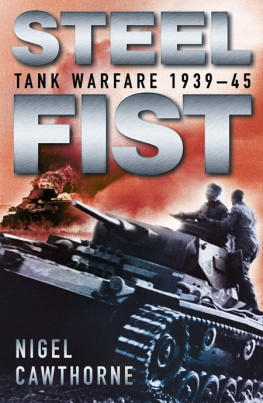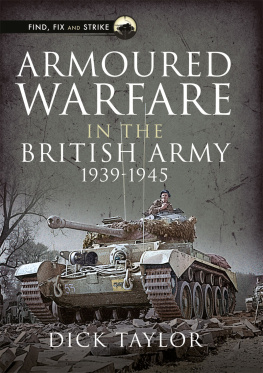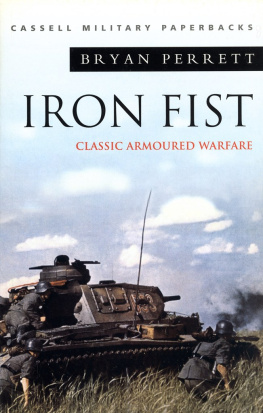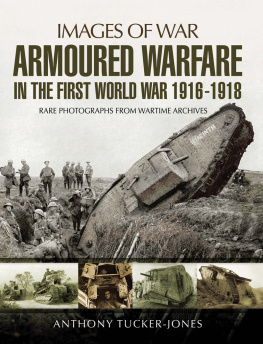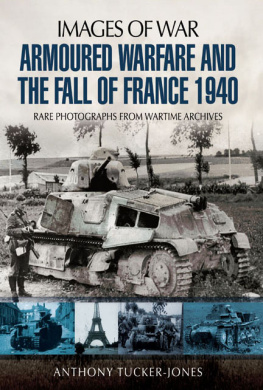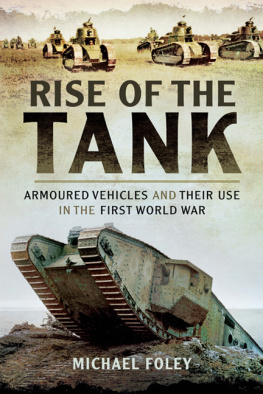THE FRENCH ARMYS TANK FORCE AND ARMOURED WARFARE IN THE GREAT WAR
Recent scholarship has challenged the assumption that military commanders during the First World War were inflexible, backward-looking and unwilling to exploit new technologies. Instead a very different picture is now emerging of armies desperately looking to a wide range of often untested and immature scientific and technological innovations to help break the deadlock of the Western Front. Nowhere is this better illustrated than in the development of tank warfare, which both the British and the French hoped would give them a decisive edge in their offensives of 1917 and 1918. Whilst the British efforts to develop armoured warfare have been well chronicled, there has been no academic study in English on the French tank force the Artillerie Spciale during the Great War. As such, this book provides a welcome new perspective on an important but much misunderstood area of the war.
Such was the scale of the French tanks failure in their first engagement in 1917, it was rumoured that the Artillerie Spciale was in danger of being disbanded, yet, by the end of the war it was the worlds largest and most technologically advanced tank force. This work examines this important facet of the French armys performance in the First World War, arguing that the Artillerie Spciale fought the war in as intelligent and sensible a manner as was possible, given the immature state of the technology available. No amount of sound tank doctrine could compensate for the fragility of the material, for the paucity of battlefield communication equipment and for the lack of tank-infantry training opportunities. Only by 1918 was the French army equipped with enough reliable tanks, as well as aircraft and heavy-artillery, to begin to exercise a mastery of the new form of combined-arms warfare. The successful French armoured effort outlined in this study (including a listing of all the combat engagements of the French tank service in the Great War) highlights a level of military effectiveness within the French army that has hitherto been little acknowledged.
About the author
Dr Tim Gale undertook his doctoral research on the French tank service (the Artillerie Spciale) at the Department of War Studies, Kings College, under the supervision of Professor William Philpott. His interests continue to be the Artillerie Spciale and other aspects of French Army in the Great War.
This figure has intentionally been removed for copyright reasons.
To view this image, please refer to the printed version of this book
General Jean-Baptiste Estienne reviewing the troops.
Courtesy of the Imperial War Museum, London (IWM Q56439).
This book is dedicated to my parents
John and Lisel Gale
Ashgate Studies in First World War History
Series Editor
John Bourne
University of Birmingham, UK
The First World War is a subject of perennial interest to historians and is often regarded as a watershed event, marking the end of the nineteenth century and the beginning of the modern industrial world. The sheer scale of the conflict and massive loss of life means that it is constantly being assessed and reassessed to examine its lasting military, political, sociological, industrial, cultural and economic impact. Reflecting the latest international scholarly research, the Ashgate Studies in First World War History series provides a unique platform for the publication of monographs and edited volumes on all aspects of the Great War. Whilst the main thrust of the series is on the military aspects of the conflict, other related areas (including cultural, political and social) are also addressed. Books published are aimed primarily at a post-graduate academic audience, furthering exciting recent interpretations of the war, whilst still being accessible enough to appeal to a wider audience of educated lay readers.
Also in this series
The Clergy in Khaki
New Perspectives on British Army Chaplaincy in the First World War
Michael Snape and Edward Madigan
British Artillery on the Western Front in the First World War
The Infantry cannot do with a gun less
Sanders Marble
Early Trench Tactics in the French Army The Second
Battle of Artois, MayJune 1915
Jonathan Krause
The French Armys Tank Force
and Armoured Warfare in
the Great War
The Artillerie Spciale
TIM GALE
First published 2013 by Ashgate Publishing
Published 2016 by Routledge
2 Park Square, Milton Park, Abingdon, Oxon OX14 4RN
711 Third Avenue, New York, NY 10017, USA
Routledge is an imprint of the Taylor & Francis Group, an informa business
Copyright 2013 Tim Gale
Tim Gale has asserted his right under the Copyright, Designs and Patents Act, 1988, to be identified as the author of this work.
All rights reserved. No part of this book may be reprinted or reproduced or utilised in any form or by any electronic, mechanical, or other means, now known or hereafter invented, including photocopying and recording, or in any information storage or retrieval system, without permission in writing from the publishers.
Notice:
Product or corporate names may be trademarks or registered trademarks, and are used only for identification and explanation without intent to infringe.
British Library Cataloguing in Publication Data
A catalogue record for this book is available from the British Library
Library of Congress Cataloging-in-Publication Data
Gale, Tim, 1956-
The French armys tank force and armoured warfare in the Great War : the Artillerie Spciale / by Tim Gale.
pages cm. -- (Ashgate studies in First World War history)
Includes bibliographical references and index.
ISBN 978-1-4094-6661-1 (hardcover) 1. France. Arme. Artillerie Spciale. 2. France. Arme--History--World War, 1914-1918. 3. World War, 1914-1918--Tank warfare. 4. Tanks (Military science)--France--History--20th century. I. Title.
D608.G35 2013
920.4'1244--dc23
2013008982
ISBN 9781409466611 (hbk)
ISBN 9781315558004 (ebk)
Contents
List of Figures, Photographs, Maps and Tables
Figure
Photographs
The publisher would like to apologize for not including the following photographs in the eBook editions due to permissions restrictions. To view these images, please refer to the printed version of this book.
Maps
Tables
Series Editors Foreword
Despite its popular reputation as a sterile slogging match, the First World War on the Western Front saw a transformation in the conduct of war that some commentators have described as a revolution in military affairs. At the heart of this transformation was the development of the combined arms deep battle. This was made possible by a huge increase in the accuracy, range, volume and destructiveness of artillery, by the military use of a very recent technology, powered flight, and by the introduction of a wholly new weapon of war, the tank. The tank was a British invention that had powerful contemporary champions, especially Winston Churchill, and influential post-war propagandists, such as C.D. Baker-Carr, J.F.C. Fuller and Basil Liddell Hart, who tended to portray British tank development as a struggle between prophetic innovators and a reactionary military establishment, an argument that has been demolished by modern scholarship. The attention given to the history of British armoured development has, however, overshadowed the importance of tanks in the French Army.


